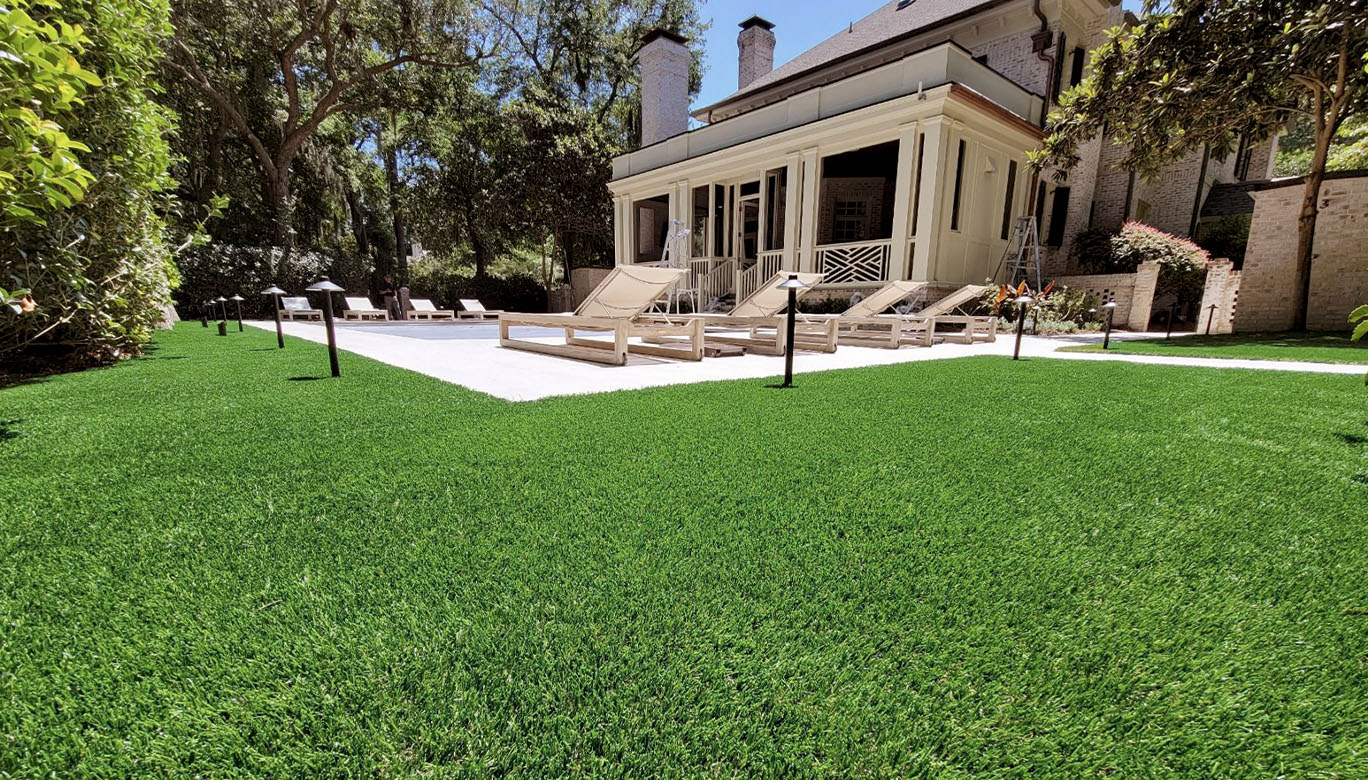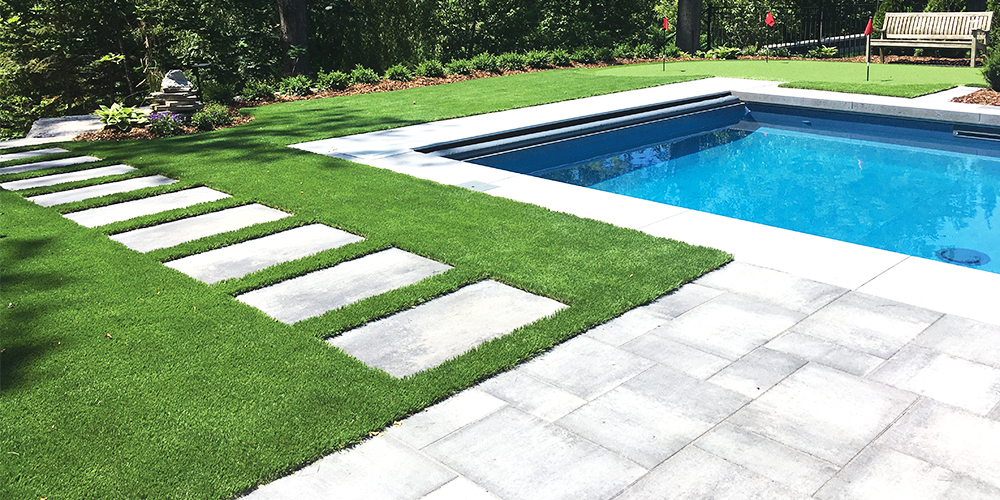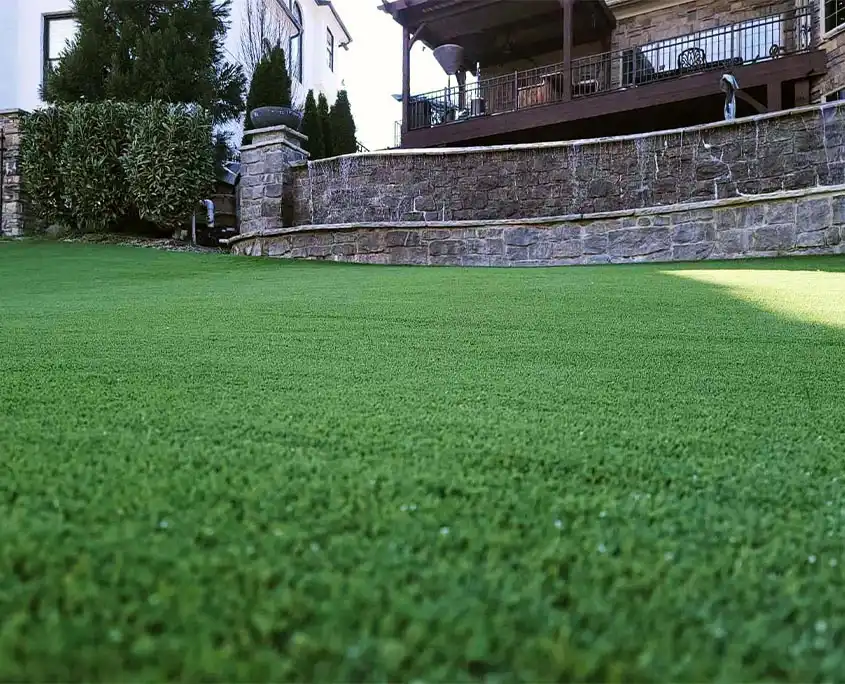Delve Into the Environmental Perks of Opting for Artificial Turf Solutions
The fostering of synthetic grass solutions offers an engaging chance to deal with pushing environmental difficulties. By significantly minimizing water usage and minimizing the application of dangerous chemicals, these alternatives not only advertise lasting landscaping yet likewise protect local ecosystems. The reduced carbon impact connected with lowered maintenance tasks contributes to a much more lasting method to land monitoring. The effects of these benefits expand beyond simple conservation initiatives, raising questions about their long-term influence on habitat preservation and overall environmental equilibrium. Discovering these measurements exposes a complex interplay worth considering.
Water Preservation Advantages
One of the most substantial benefits of synthetic grass is its capacity to save water. Traditional lawn yards require considerable irrigation, particularly in areas vulnerable to drought or water restrictions. On the other hand, synthetic grass does not need watering, dramatically minimizing the overall need for water resources. This function is especially beneficial in arid regions where water shortage is a pushing worry.
By removing the need for routine watering, synthetic grass adds to lasting landscape techniques and aids minimize the environmental impact of extreme water usage. The conservation of water expands to the decrease of overflow, which can lead to dirt erosion and river air pollution.
Additionally, the setup of artificial grass enables home owners and communities to allocate water resources extra successfully, concentrating on vital uses such as alcohol consumption water and farming. The change in the direction of synthetic grass not just advertises liable water usage yet likewise straightens with wider ecological goals targeted at protecting all-natural resources.
As areas increasingly prioritize sustainability, the water conservation advantages of synthetic grass present an engaging instance for its adoption in industrial and residential landscaping tasks.
Reduced Chemical Use
The transition to man-made turf substantially lowers the dependence on chemical therapies typically used in natural yard upkeep. Standard turf administration usually entails the application of fertilizers, herbicides, and pesticides to advertise growth and control bugs. These chemicals can posture dangers to human health, neighborhood wild animals, and the setting, adding to dirt and water contamination.
In contrast, man-made lawn gets rid of the demand for these harmful materials. By decreasing the release of synthetic compounds into the environment, man-made lawn advertises healthier dirt and water systems.
Additionally, the absence of chemical overflow connected with man-made grass setups helps safeguard neighborhood waterways from contamination, sustaining water life and maintaining biodiversity. Arizona turf. As neighborhoods significantly focus on sustainable methods, going with synthetic lawn presents a sensible remedy that straightens with ecological conservation goals. Through this shift, homeowner can appreciate rich environment-friendly areas without compromising ecological health and wellness, paving the way for a much more lasting future
Reduced Carbon Impact

Moreover, the installment of synthetic grass can lead to significant water preservation. Natural yards require considerable quantities of water for watering, which not just adds to the carbon impact connected with water extraction and therapy however likewise strains local water sources. In contrast, synthetic grass needs very little upkeep, calling for no watering, thereby considerably lowering water usage and its connected power prices.
Furthermore, the longevity of artificial grass adds to its reduced carbon impact. With a life-span of as much as 15 years or more, the requirement for constant substitutes is decreased, leading to less waste and lower power intake in production and taking care of typical yard alternatives. On the whole, synthetic grass presents a sustainable option for ecologically aware landscape design.
Habitat Preservation
Habitat conservation is an important consideration in the discussion over landscape design selections, especially when comparing synthetic grass to all-natural turf. Natural grass yards typically need extensive maintenance, consisting of making use of pesticides, herbicides, and fertilizers, which can adversely affect local environments. These chemicals can leach right into the soil and rivers, harming native flora and animals and interfering with neighborhood environments.
Fabricated grass eliminates the need for dangerous chemicals, consequently safeguarding close-by wild animals and maintaining the honesty of surrounding environments. The installation of man-made grass can lead to the conversion of previous lawn areas into more biodiverse landscapes, such as pollinator yards or native plant areas, which can support neighborhood wildlife.
Eventually, the shift to synthetic grass not just preserves water and lowers maintenance initiatives however additionally promotes a much more harmonious partnership between human tasks and the all-natural atmosphere, promoting environment conservation while doing so.
Long-Term Sustainability
Long-term sustainability is a critical variable in assessing the advantages of synthetic grass over conventional grass lawns. One of the most considerable benefits of synthetic grass is its resilience; it can last look what i found approximately 15-20 years with marginal maintenance, whereas natural grass requires regular reseeding and replacement. This longevity lowers the requirement for constant sources, such as water, plant foods, and chemicals, which are necessary for maintaining a healthy turf yard.
In addition, man-made turf contributes to a reduction in carbon exhausts connected with grass treatment devices. Traditional grass commonly require gas-powered mowers, trimmers, and blowers, all of which add to air contamination. Arizona artificial turf. On the other hand, man-made turf removes the demand for such devices, promoting a cleaner environment
In addition, the manufacturing of synthetic grass progressively uses recycled products, enhancing its sustainability profile. As suppliers embrace green techniques, the ecological impact of synthetic grass continues to reduce.

Final Thought
The adoption of man-made grass remedies offers significant ecological advantages, including considerable water preservation, reduced dependence on harmful chemicals, and a reduced carbon impact. Moreover, synthetic grass aids in maintaining natural environments by decreasing land disruption and promoting long-lasting sustainability through the use of resilient products. Collectively, these aspects emphasize the possibility of synthetic grass to contribute positively to environmental health and provide a viable choice to typical landscape design techniques in a significantly resource-conscious globe.
In contrast, artificial grass does not need watering, significantly lowering the overall need for water resources. By minimizing the launch of artificial substances into the ecosystem, fabricated lawn advertises healthier soil and water systems.
In addition, the installation of synthetic grass can site result in considerable water preservation. In comparison, synthetic lawn needs very little maintenance, needing no watering, consequently substantially lowering water usage and its associated energy prices.
